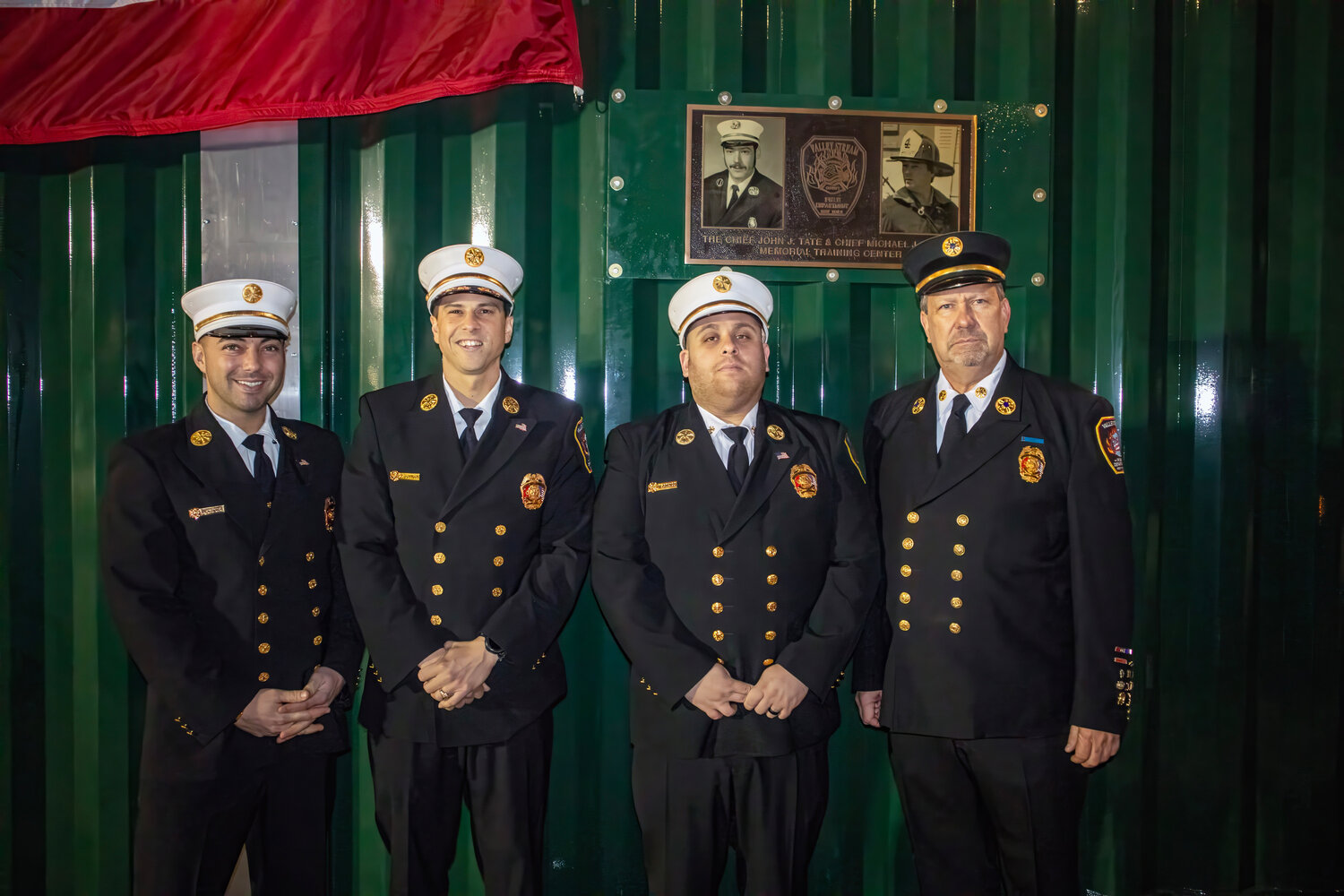Valley Stream Fire Department's new 1M dollar training facility, explained.
A $1 million investment by the Village of Valley Stream in its fire department for a new multipurpose training facility was celebrated during its opening by dignitaries and fire department personnel.
The new firefighter training facility is named after Captains John Tate and Michael Moran, who both died in the Temple Gates of Zion fire in 1979.
Department Chief Patrick Scanlon said he hoped the new training site, located on Hawthorne Avenue, would not only be a boon to existing members but also enhance recruitment of new ones to the department.
“People from the community are going to be able to come down here and see us training, what we’re all about, and what we do,” Scanlon said.
The design of the new training facility took about six months. Danny Youngsen, a former captain of the department who currently works for the New York City Fire Department, orchestrated the planning. He went with the planning committee to various new training facilities throughout Long Island to explore what the Valley Stream facility could look like.
Money initially allocated to a new fire truck was reallocated to fund the training facility. Fire trucks usually take six months to build noted Scanlon, but pandemic-induced manufacturing delays have stretched that process to three to four years. Since the department determined money for a new truck wouldn’t be needed for a few more years, immediate funds were available to spare for the construction of the training facility.
What does the facility offer?
The facility was designed to maximize the configurations of structures providing training options of searches, standpipe operations, hose stretching, bail-out jumping, and more. There is also a maze at the top for self-contained breathing apparatus training: how to put the pack on, take the pack off, and fit between tight areas during a fire.
The Fire Department has never had a training facility in town. Firefighters had had to make the trek to North Woodmere to train.
The department comprises seven companies made up of roughly 225 firefighters. The new training site can house about 70 to 80 firefighters at any one time.
“Half of them will never even see each other, this thing is so big,” Scanlon said.
The new facility boasts compartmentalization capability with movable walls to reconfigure ever-changing structures to simulate different challenges for firefighters. It includes windows with bars, to practice cutting. There is a standpipe on every floor. There are pocket doors and closets.
On the second floor, there is a roll-down door like in a storefront to simulate fighting commercial fires. On the third-floor roof, there is a common roofing material to practice cutting through. On the third and fourth floors is a mass confidence maze to practice different maneuvers while trapped, and the ceiling gets lower.
An enviable legacy
The fire department is staffed solely by volunteers and depends on community involvement to keep it running. As it stands, only Valley Stream firefighters will be training at this new facility on account of insurance and liability issues, but officials expressed that may change later down the road. Nevertheless, the facility will help to maintain the department’s standard of excellence, noted Scanlon, in preparing for a growing menu of fire contingencies.
“Valley Stream has always had unparalleled fire protection,” Scanlon said. “All this will do is allow us to be more proficient, operate more safely, and hopefully be able to engage with the community in a way that will be beneficial both to them and ourselves.”
Former chief Mark Watenberg said it was fitting that the facility be named after Tate and Moran.
“They were at the tip of the spear in both performance and training and undoubtedly represented the next generation in our department leaders,” Watenberg said. “Their loss was a terrible shock.”
Mayor Ed Fare, a fellow volunteer firefighter, said the naming of the training facility is a perfect tribute to Tate and Moran.
“Advances in firefighting have become a part of all our protocols and training and we continue every day to strive to always be safer and remember their great names,” Fare said. ”As first responders, we’re prepared and ready for any situation. The danger is always right around the corner.”

 50.0°,
Overcast
50.0°,
Overcast 




